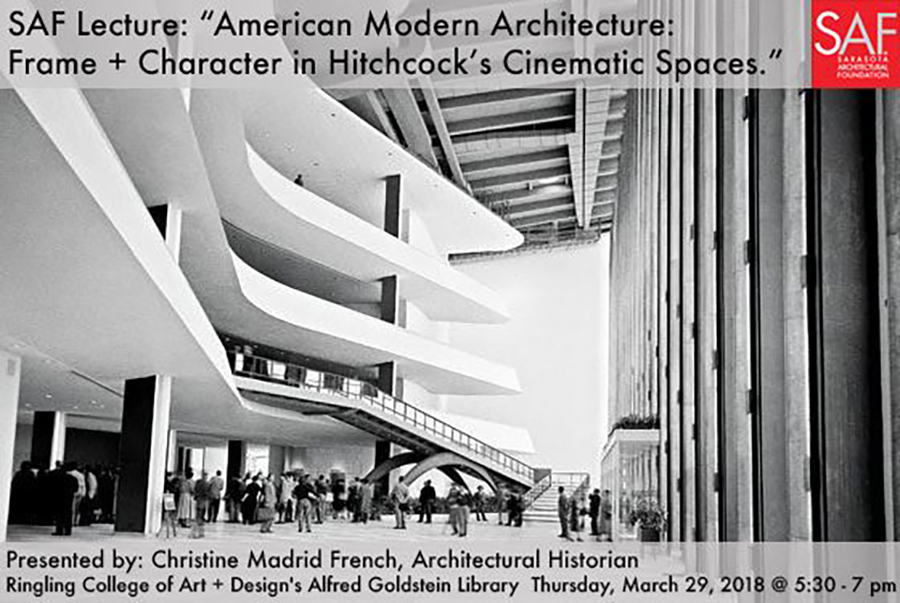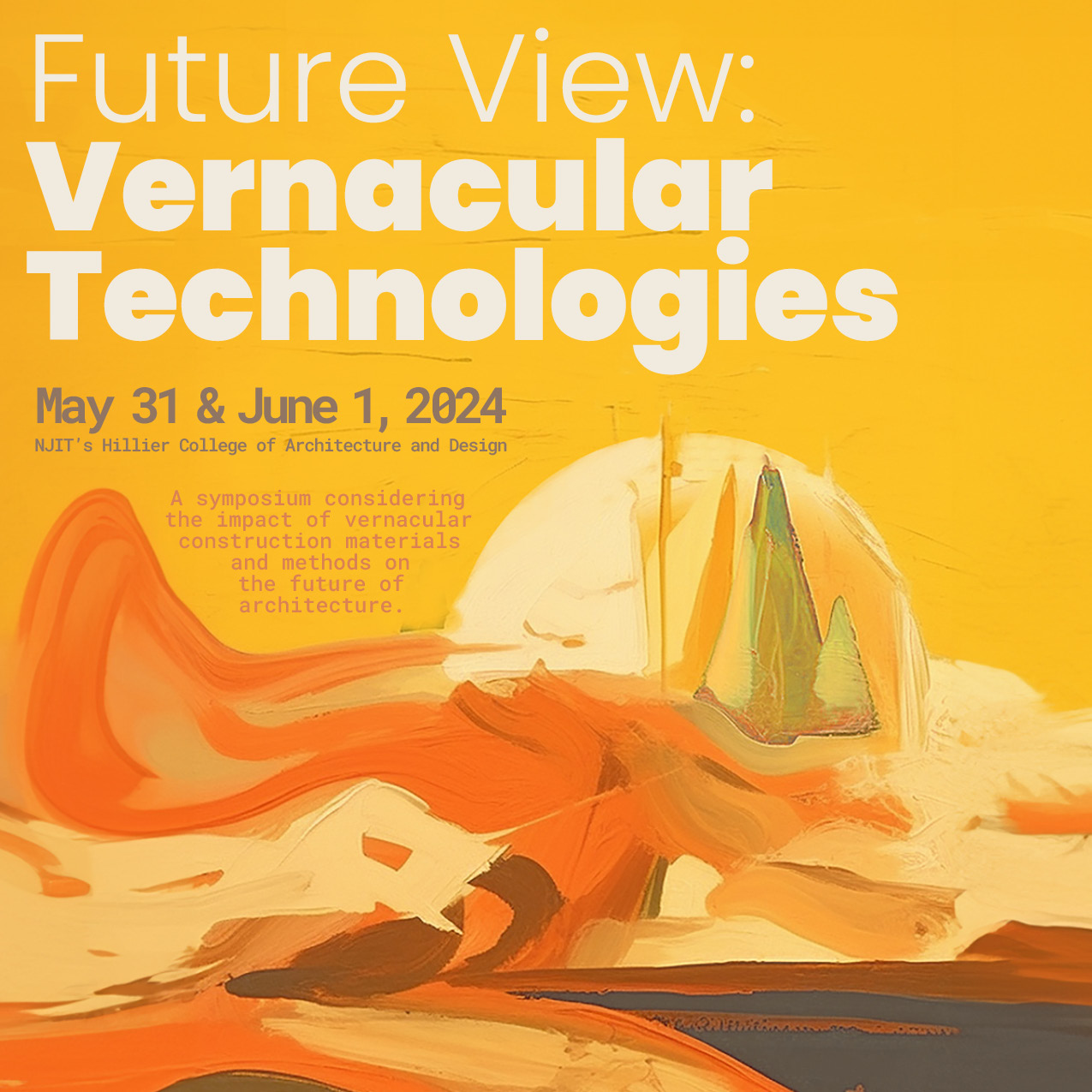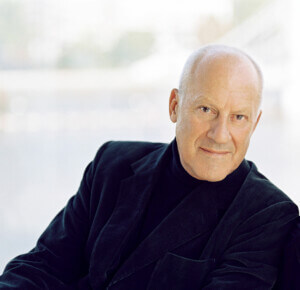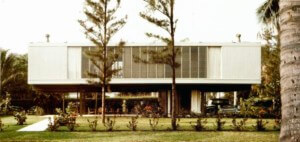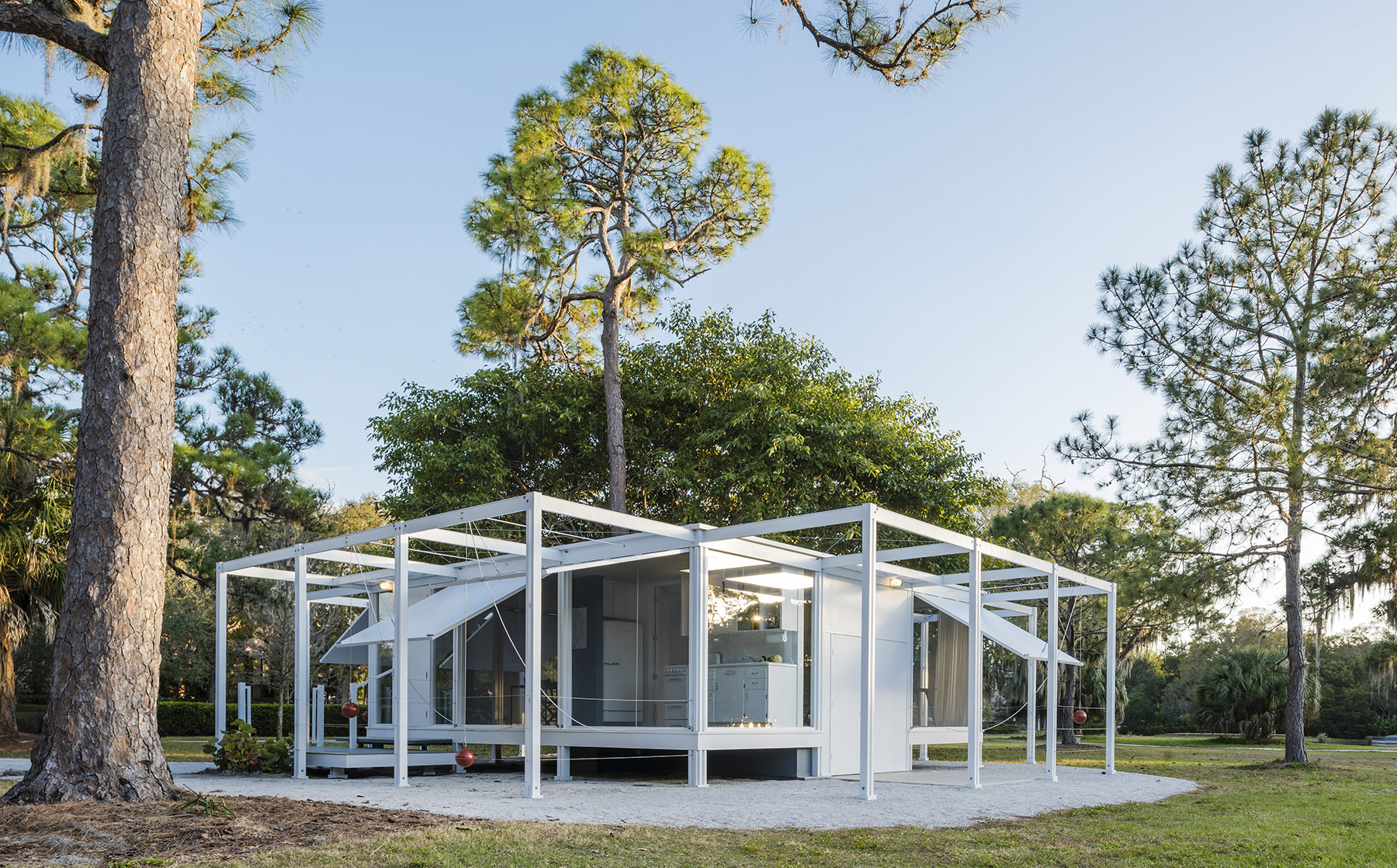“American Modern Architecture: Frame + Character in Hitchcock’s Cinematic Spaces.” A visually-rich presentation focusing on Hitchcock’s penchant for filming suspenseful chase scenes, heart-stopping moments and romantic interludes against the backdrop of American modernist architecture.
Synopsis: With few exceptions, buildings played a pivotal role in each of Alfred Hitchcock’s works. The popularization of Modernism after World War II, however, provided the director with a range of stunning design masterpieces and everyday environments needed to highlight the tension and balance unique to his cinematic storytelling. For Hitchcock, modern buildings visually and metaphorically presented the future in contrast with the past, in an era in which the public struggled to embrace the brave new world of the Space Age, Civil Rights, and the Cold War, and sought respite in a series of suspenseful thrillers at the cinema.
The modern structures in Hitchcock’s films—including buildings featured in Psycho, North by Northwest, and Vertigo–are not reduced to mere set pieces, but often functioned as fully-developed characters in the story. Indeed, in American Modernism Hitchcock discovered and established long-standing film archetypes such as the villain’s lair, utilizing architectural transparency and cliff-side cantilevering to represent the clear yet dangerous vision of protagonist Philip Vandamm and the precarious future of the hero. Vandamm’s purely fictional home, featured in North by Northwest, is reminiscent of the late-period organic modernism popularized by master architect Frank Lloyd Wright. With the precedent set, later movie villains took up residence in actual modernist structures designed by architects John Lautner and Richard Neutra, both successful apprentices of Wright.
In many of his films, Hitchcock also utilized modernism’s essential elements—seen in buildings such as the utopian United Nations Headquarters and the steel-and-glass Harrison and Abramovitz-designed 1957 Commercial Investment Trust Building, both in New York City–as cultural shorthand to convey society’s views on anonymity and one’s place in increasingly complex urban environments. Whether set at the downtrodden Bates Motel—representing the end of an era—or within the gleaming valleys of Manhattan, Hitchcock skillfully crafted narrative spaces utilizing the form and symbolism of modern architecture.
Christine Madrid French, an advocate for the study and preservation of American architecture,was born and raised in Los Angeles. She graduated from the University of Utah in Architectural Studies and worked for the National Park Service as an historian in Washington, D.C. Ms. French earned a master’s degree in Architectural History from the University of Virginia and worked as the Director of the Modernism Program for the National Trust for Historic Preservation in San Francisco. She is an Expert Member on the 20th-Century Heritage Committee for the International Council of Monuments and Sites (ICOMOS) and teaches at the Historic Preservation Program at the University of Florida.







